If you want to travel to Tibet from China, don’t forget that you will also need a visa to China! The Chinese visa can be a bit of a hassle to get, so I recommend going through a company like iVisa if you don’t want to worry about it.
Last night while feeling a bit overwhelmed by how much Norwegian I have yet to learn I had to take a step back and remind myself that at least Norwegian is the simplest language I’ve ever studied. The hardest? Tibetan! I think the moment I gave up on Tibetan was when I asked my Tibetan host parents how to spell the word for “book” and they couldn’t figure it out. Tibetan is hard.
Studying Tibetan probably sounds like the most random thing ever, and no, I wasn’t going through Buddhist phase, but instead this all happened while doing a semester abroad in university.
I enrolled in a Tibetan and Himalayan studies program which was meant to take place in India and Bhutan, but at the last minute the Bhutan portion was switched out for Tibet, which was then eventually replaced by two months in Nepal. While I loved my time in Nepal, I’m still a little sad that I missed out on Bhutan and Tibet – especially after my Tibetan host family had gotten so excited over my going to Tibet.
So when Samantha contacted me and offered to write a post about her time in Tibet I couldn’t have been more thrilled! I’m ashamed to admit, however, that that excitement quickly turned to jealousy when I read her post. I want to go!
Side note: travel to Tibet is a bit controversial, but with proper research you can find ethical ways of visiting without only supporting the Chinese (hint: you’re going to want to get out of Lhasa) and I maintain that there is no better way of getting to know a country, its problems, and ways you can help than visiting and speaking to locals.
The Place
Tibet
Why You Need to Visit Tibet
Tibet is absolutely beautiful. The scenery is unlike anything I have ever seen before, and it is still relatively untouched. China does have a few military posts here, but we were left completely alone during our 4 day trek. The people are also extremely friendly and it provides a much different experience to urban China. Foreigners must book a tour in order to enter Tibet due to political reasons, but it is quite easy to find a guide or use a tour company to get your entrance letter.
Where You Need to Go in Tibet
Lhasa is a very interesting capital. There is a good mix of native Tibetans and Chinese, and you can see a cool mash-up of cultures here. The highlight of Tibet, though, is the mountains. Just 30km outside of the city provides you with gorgeous rolling hills, rocky mountains, and pretty lakes. There are tons of options of where to trek too, so you can base your trip around difficulty levels and particular sights you’d like to see (eg. Mt. Everest!).
We chose to stick close to Lhasa as we didn’t have a lot of extra time, but you can explore as far west as the border of Tibet and Nepal and trek through the Himalayas.
How to Get to Tibet and Travel Around Tibet
To get to Lhasa, we decided to take the train from Chengdu, China. The reasoning for the 40 hour train was was that it would help us acclimate to the altitude more easily than flying.
Unfortunately, we still felt under the weather and experienced a few symptoms of altitude sickness. The views from the train were beautiful, but it was pretty packed and not very clean. The benefit, though, was that it was much cheaper than flying and soft-sleeper compartments are fairly comfortable.
Once you arrive in Lhasa, there are cabs and public vans that you can take, but since you need a tour guide to enter Tibet as a foreigner, most groups have a van for hire. This makes getting to your initial trekking point much easier. Once you get to your starting point, you walk! I trekked 40km in three days, which was a great pace for my group. There are several other options based on how fit you are and how high you choose to hike.
Where to Stay in Tibet
We stayed in downtown Lhasa at a hotel but loved camping and staying at a monastery. I would definitely recommend checking with your guide to see if it is possible to stay with locals as you get so much more out of your experience.
What to Pack for Travel in Tibet
This depends on the weather. We were horribly underprepared for how cold it would be at night in early October. I highly recommend bringing lots of layers, a nice hat, warm socks and gloves for the evening. Leggings, t-shirts, and light jackets were great during the day. At night we ended up putting on everything we brought to stay warm. You can wear normal trainers as most of the hiking isn’t too complicated, but if you plan on hiking up Everest you may need some more serious footwear. I also suggest sunglasses. It was bright up in the mountains! Our local guide brought tents, sleeping bags, water, and food, so check with yours before packing as you may not need to bring anything other than your clothes and your camera.
What to Eat in Tibet
The most popular dish in Tibet is the yak momo. It is similar to a dumpling, but filled with delicious spiced yak meat. You can also try the yak butter and yak cheese. These dishes definitely have a unique flavor! Many Tibetans prefer to eat yak meat because it aligns with their Buddhist beliefs. One yak can feed 50 or more people, which is much better for the planet than chicken or fish in their eyes. Plus, its delicious!
The Best Tours to Tibet
And if you’d like to explore more of Tibet, taking a tour can be a really good option, especially if you want to go for two weeks or more. G Adventures and Intrepid Travel both offer several good Tibet tours (some of which also include a tour through China as well).
Check current prices and availability for G Adventures Tibet tours here
Check current prices and availability for Intrepid Travel Tibet tours here
About the Author:
Samantha is a nomadic teacher with a serious case of wanderlust. She is from Washington, D.C., but currently lives and teaches in Shanghai, China. Samantha fills her time by planning her next trip and working out how to reach 40 different countries by the time she is 40. At 29 beautiful countries so far, she is right on track.
You can read more about her travel adventures on her blog!
PIN IT!
Is Tibet on your bucket list – or have you been?
Have a special place off the beaten path you’d like to share? Email me at heartmybackpack@gmail.com with the destination and I’ll send you some questions to answer about it!

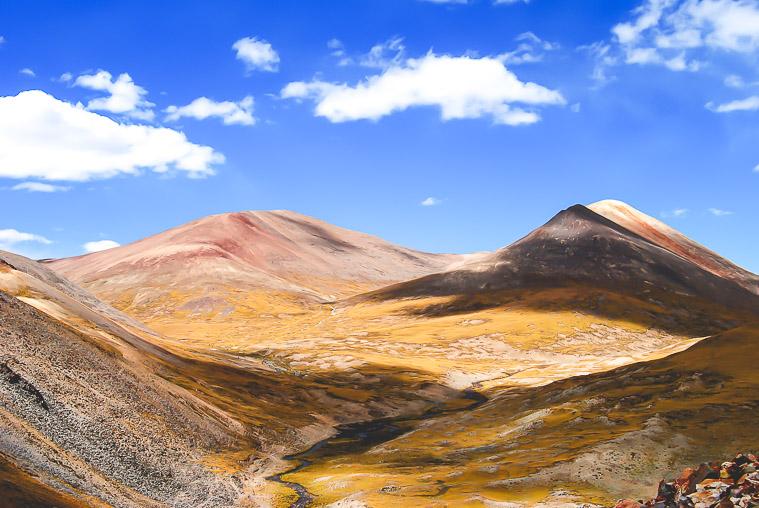
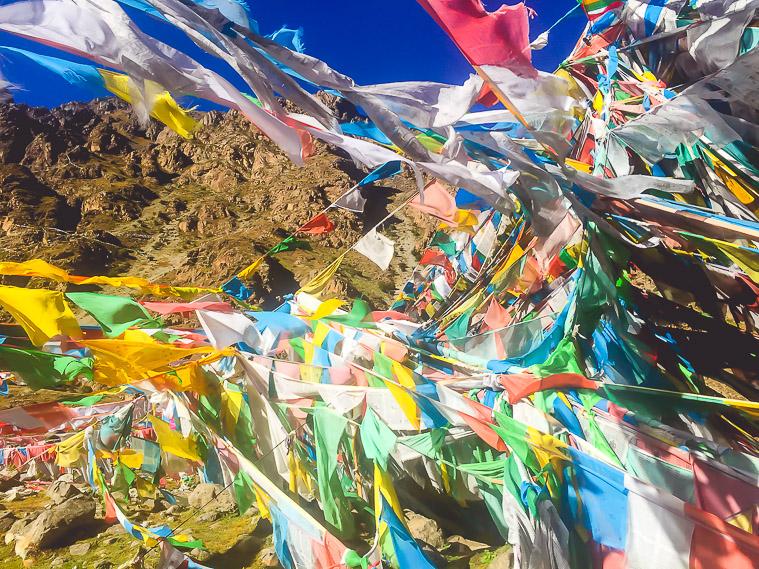




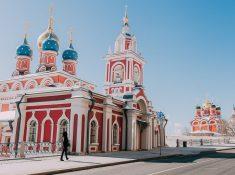

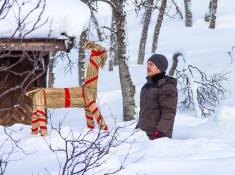
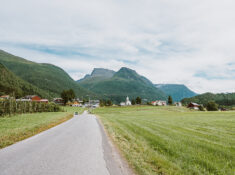 The Best Way to Get from Bergen to Oslo
The Best Way to Get from Bergen to Oslo
Lisa says
Those mountains look beautiful! I also took a class on Tibet in college and found it fascinating. I would love to visit someday and I agree that it would be a good way to learn what the situation is actually like there. Thanks for the post!
Silvia says
Don’t they look beautiful? Hopefully we can both go someday!
Kaelene @ Unlocking Kiki says
You have seriously had the most adventurous life ever girl! And on another note, Tibet looks so beautiful, what an adventure to get to visit!
Silvia says
Right? I would love to visit someday!
becky hutner says
I love the casual mention of your Tibetan and Himalayan studies program…whaaaaaa? You are full of surprises, Silvia!
Yes I’ve always wanted to go to Tibet but for some reason, I want to visit Bhutan even more. So I am really hurting for your younger self who had all that cancelled last minute. However, you are intrepid Silvia & I KNOW you’ll make it happen!
Silvia says
I think every single person on my program had signed up because they wanted to go to Bhutan, so it was pretty sad for all of us. But then we learned some really interesting stuff so… maybe the lesson was that it’s not all about cool trips? (Except I’m pretty sure it is.)
Vanessa @ The Travelling Colognian says
I love this article and the photos, both bring back so many amazing memories of my own journey across Tibet. In July and August 2010 I was lucky to travel across Yunnan first and fly to Lhasa from Zhongdian/Shangri-La. After spending a few days in Lhasa we visited the Namtso and the Yamdrok Yamtso lakes, Gyantse, Shigatse, Sakya, the Everest Base Camp and a border town called Zhangmu before leaving Tibet to Kathmandu. In 2010 you were also only allowed to travel in Tibet with a local guide, but our group was small, only seven people, and our guide was amazing.
Since the Rongbuk Monastery where we would have usually stayed was under construction at that time we stayed with a local Tibetan host family in a tent camp even closer to the Everest Base Camp.
I hope to go back to Tibet one day to explore western Tibet with the Mount Kailash and Lake Mansarovar as well.
Silvia says
It sounds like you had such an amazing experience – having a wonderful guide is also so key, you must have learned so much!
Sarah Miller says
Please don’t visit Tibet for obvious reasons – the oppression of the Tibetans for one. Not to mention the fact that there are now more Chinese in Lhasa than Tibetans. If you need more reasons … the complete commercialization and “disneyfication” of Lhasa by Chinese and the wholesale sell-off of the area for mining. Check out Human Rights Watch if you want to know the real story of Tibet.
Please support Tibetan causes at home instead of spending your money in Lhasa.
Silvia says
I think it’s so admirable that you are supporting Tibet at home! Sadly I also think that as far as boycotting countries goes, often it ends up encouraging people to ignore or forget about their problems instead of help. There’s nothing like visiting a country and talking to locals to raise someone’s passion about their cause, and by speaking to people there you can learn what’s truly going on and needs to change.
When I visited outlying Tibetan towns in China I was fairly horrified at the disneyfication of Tibetan culture there. But I ended up talking to a lot of local Tibetans about it and learned so much from the experience, so I don’t think going was a mistake. Because while Tibet is full of Chinese looking to make money, it’s also full of Tibetans looking to be heard (and also make money), and luckily I think it’s entirely possible to make a trip to Tibet without only interacting with and giving money to Chinese people. My Tibetan host parents had family still living in Tibet and working in tourism, so they depended on foreigners continuing to come and visit their country.
Sorry for the longwinded response – I totally understand your feelings about the human rights abuses in Tibet, it’s just that if my semester living with Tibetans taught me anything it was that people shouldn’t stop visiting the country! Antarctica on the other hand…
Lauren says
OMG Tibet looks like another planet! I’ll definitely give it a try although I don’t know how well I’ll do in the altitude 😉
Silvia says
Yeah, I definitely had some altitude issues in Dharamsala, so I think I’d have to take a lot of time to adjust to Tibet!
Aaron K says
such a great post! the pictures are stunning, i’ve never wanted to go to Tibet more:) good info too, now i know I need to book to a tour to see this amazing place. Hope I get to go one day soon! I will certainly keep the Human Rights aspect in mind and do what I can to help their cause. Did you ever find out how to spell “Book” though?? lol!
Silvia says
Haha no! I think my assignment was to just learn 5 new words, so we found 5 words they knew how to spell instead!
Mary B says
Tibet has been on my bucket list ever since I read Seven Years in Tibet… although obviously the reality is quite different now than when the book was written. Thank you for your thoughtful response above about why it can still be important/ethical to visit places like Tibet. I’m always torn, and certainly don’t want my dollars to go to a corrupt regime – but I think that if done well, the tourism can still be justified (and a very important source of income for locals, and education for visitors, as you said). I also think that we’re very quick to blame certain countries for human rights abuses, while ignoring similar or worse abuses that our own countries or our allies participate in – I just got back from Iran so I’m feeling pretty sensitive to this issue right now!
Silvia says
It’s so true – there are human rights abuses in plenty of popular destinations in Europe and Asia – like Thailand! – that don’t keep people from visiting. It’s tough because of course you don’t want to support the corruption, but there are still people living in these countries that don’t deserve to be ignored.
Shannon Ullman says
Tibet is totally on my list! I just love that you have this off the beaten path section to your blog because I am kind of tired of reading about the same generic tourist spots!
-Shannon
Silvia says
So glad you’re enjoying the series! I’ve been loving reading people’s submissions – it’s introduced me to a few new places as well.
john smith says
Very informative. Thanks for sharing. This article makes me want to visit Tibet all the sooner! It has been my dream for a very long time, and now I’m even more excited to see all the above-mentioned places! this is really helpful.
Rajendra Timalsina says
It was great to know how to travel tibet thanks for sharing information in details.
Woaber says
Such a comprehensive information on travelling to Tibet. Thank you for sharing information on travelling to Tibet
Meredith McLeod-Dunton says
It’s always interesting to read of other travelers to Tibet and their impressions. I lived in Tibet for three years in early 1990’s–Lhasa and Linzhi– working as an ESL teacher. I revisited Lhasa in 2016 and saw that the little city had evolved into a type of Disneyland.Very crowded and soldiers and police everywhere. I’m eighty years old and finally writing my memoir of my amazing three years.